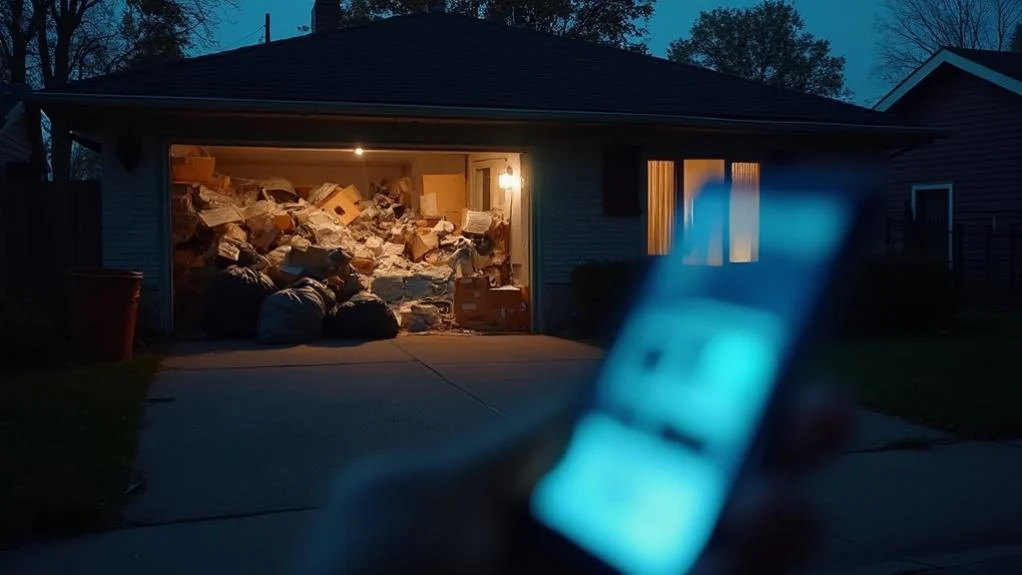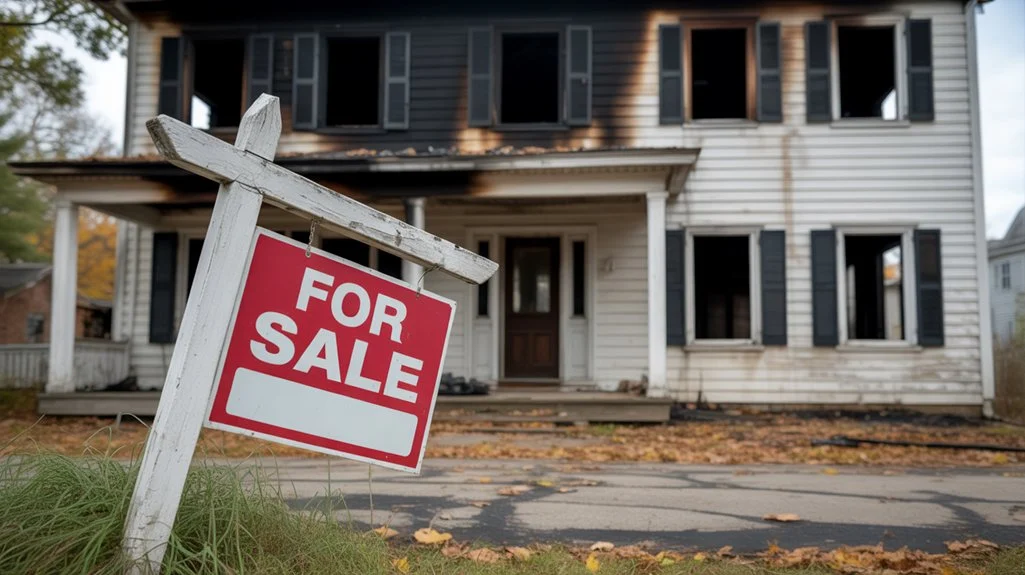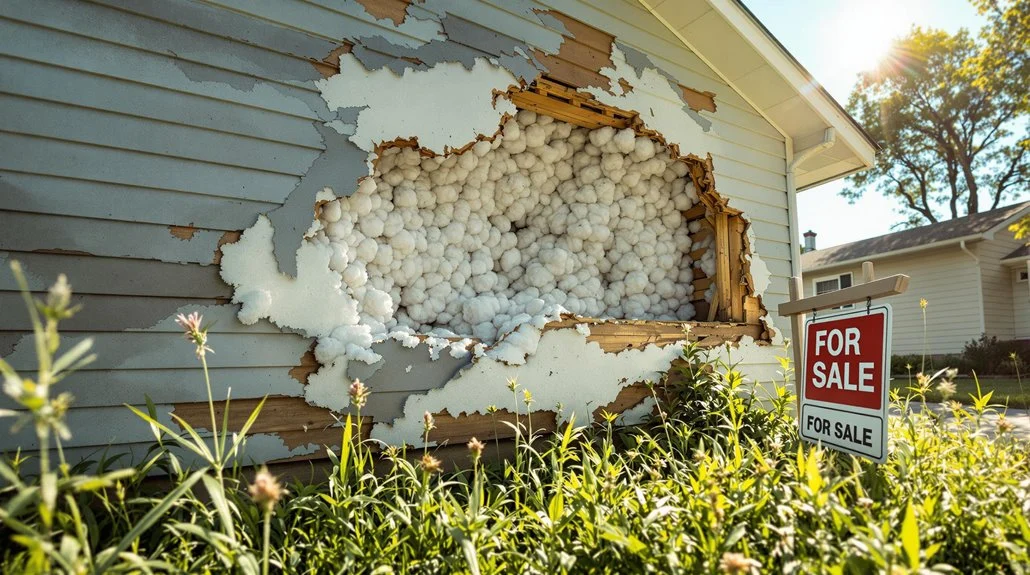Report Hoarding Issues: A Step-by-Step Guide
Sarah H. from Boston found herself overwhelmed when her elderly mother’s hoarding situation became a pressing concern for both their family and neighboring residents.
Worried about maintaining anonymity while seeking help, she discovered Better House Buyer’s discreet solution for properties affected by hoarding conditions.
Within 24 hours of contacting Better House Buyer, Sarah received a fair cash offer for her mother’s property, allowing her to address the sensitive situation without drawing unwanted attention from the community.
The company’s efficient process and understanding approach helped Sarah resolve the complex hoarding situation while preserving her mother’s dignity, setting the stage for a fresh start for everyone involved.
Key Points To Remember
Key Takeaways:
- Local health departments offer confidential online systems and anonymous tip lines for reporting hoarding situations.
- Building code enforcement offices accept anonymous reports regarding unsafe living conditions.
- National crisis hotlines provide private reporting options for cases involving vulnerable people.
- Animal control agencies allow anonymous reporting for situations involving animal hoarding.
- Housing associations and property managers typically maintain confidential channels for reporting concerns.
Understanding Hoarding Disorder
While many people collect items they value, hoarding disorder goes far beyond normal collecting behaviors. It’s a complex mental health condition where someone can’t part with possessions, even if they’re worthless. You’ll notice that people with this disorder experience severe distress at the thought of discarding items.
Several factors contribute to hoarding, including cognitive factors that affect decision-making and genetic influences passed down through families. When you’re trying to help someone with hoarding disorder, it’s important to understand that they often feel deep emotional attachments to their belongings. They might avoid social interactions due to shame about their living conditions. The condition affects about 2.5% of people, regardless of gender, and typically becomes more noticeable as people age. Stressful life events like divorce or loss of a loved one can trigger or worsen hoarding behaviors.
Signs of Dangerous Hoarding
Dangerous hoarding creates severe safety hazards that extend far beyond simple clutter. You’ll want to watch for these vital warning signs that indicate dangerous clutter has become a serious health and safety concern.
Look for these key indicators that require immediate attention:
- Living spaces that aren’t accessible or functional, with blocked exits and pathways
- Strong odors, visible mold, or pest infestations that create health hazards
- Structural damage like sagging floors or crumbling walls from excess weight
Emergency responders often need nearly double the manpower to handle fires in hoarding situations. Don’t ignore signs of level 5 hoarding, which includes missing utilities, human waste, and extreme fire risks. Remember, only 26% of hoarding households have working smoke detectors, making fire danger especially concerning. If you spot these red flags, it’s essential to take action to protect both the hoarder and their neighbors.
When to Report

Recognizing when to report hoarding requires careful consideration of both safety risks and personal rights. The key reporting criteria focus on situations that threaten public health or endanger vulnerable individuals. You’ll want to take action when conditions create risks to neighboring properties or when there’s potential disease transmission from unsanitary environments.
If you notice children or elderly people living in unsafe conditions, don’t hesitate to contact the Department of Human Services. Community involvement becomes essential when hoarding affects property values or poses risks to neighbors. While animal hoarding cases should be directed to local animal control, other violations may require contacting code enforcement or social services. Remember, many cities offer anonymous reporting options, allowing you to help without compromising anyone’s privacy or dignity.
Available Reporting Methods
Several secure channels exist for reporting hoarding situations anonymously, ensuring both safety and discretion. You’ll find multiple hoarding resources available through community agencies, online platforms, and professional services. These options make anonymous reporting straightforward while protecting everyone involved.
Here are three reliable ways to report hoarding cases:
- Contact local health departments through their confidential online forms
- Use national hoarding hotlines that guarantee anonymity
- Join online support groups that connect you with reporting resources
Professional cleaning services often provide additional reporting channels and can guide you to local support networks. They’ll work closely with community agencies and mental health professionals to address the situation appropriately. Remember, these services prioritize discretion and understand the sensitivity of hoarding cases.
Protecting Your Identity

When reporting a hoarding situation, protecting your identity should be your top priority. To guarantee secure reporting, you’ll want to use anonymous tip lines or official channels provided by local agencies. Don’t share your personal contact information or use traceable email addresses.
For maximum identity protection, consider using public computers or secure networks when submitting reports online. You can also utilize anonymous submission forms through homeowner associations or social welfare organizations. Remember to keep any documentation of your report in a safe place.
Stay vigilant about potential identity theft risks by monitoring your credit reports regularly. If you’re concerned, you can freeze your credit to prevent unauthorized access. Most importantly, avoid discussing the report with others – this helps maintain your confidentiality and keeps you safe.
Local Resources and Support
Once you’ve taken steps to protect your identity, you’ll need reliable resources to support your reporting efforts. Your community likely has several support networks and community initiatives ready to help address hoarding situations compassionately.
You’ll find valuable assistance through:
- Local mental health services that offer professional guidance and intervention
- Social service agencies equipped to handle hoarding cases
- Professional cleanup services specializing in hoarding situations
Remember that you’re not alone in wanting to help. Many organizations provide free consultations and anonymous reporting options. You can connect with local authorities, mental health professionals, and specialized cleaning services who understand the sensitivity of these situations. They’ll work together to create a coordinated response that prioritizes both safety and dignity for everyone involved.
Legal Rights and Responsibilities

Before making an anonymous report about a hoarder, you’ll need to understand the legal framework that protects both the reporter and the individual being reported. While hoarder privacy is protected by law, there are limits when health and safety risks emerge.
As a concerned citizen, you should know that hoarding itself isn’t illegal, but it can violate local ordinances when it creates public hazards. Hoarders have legal obligations to maintain safe living conditions and follow building codes. If they don’t comply, they may face fines, eviction, or court-mandated treatment.
When you report a hoarding situation, you’re helping guarantee everyone’s safety while respecting legal boundaries. Remember, the goal isn’t to punish but to connect people with resources they need to address their hoarding behavior responsibly.
After Making the Report
Making an anonymous report sets several important processes in motion. Once you’ve made the report, emergency interventions begin quickly to guarantee everyone’s safety. Professional teams will assess the situation and determine what help is needed right away.
The process typically includes:
- Protective services evaluating immediate dangers
- Mental health professionals offering support
- Animal control helping with pet-related issues
Your report launches both immediate and long-term solutions to address the hoarding situation. You’ll see various specialists working together to create a thorough recovery plan. They’ll focus on cleaning, decluttering, and providing mental health support. While you may have reported anonymously, you can feel good knowing you’ve helped start positive changes in someone’s life. The road to recovery takes time, but your action has set healing in motion.
Building Community Safety Networks

Strong community safety networks serve as the foundation for effectively addressing hoarding situations. You’ll find that community collaboration works best when you bring together different groups like first responders, mental health professionals, and social services. By working as a team, you can better support those affected by hoarding.
Resource allocation becomes more efficient when you establish local task forces dedicated to hoarding cases. You can connect with organizations that offer education, support groups, and intervention services. Don’t forget to familiarize yourself with local laws and maintain confidentiality while helping others.
Consider joining or starting a hoarding task force in your area. These groups provide valuable resources and create a coordinated response system that helps both individuals who hoard and their neighbors stay safe.
Common Questions
How Long Does It Typically Take for Authorities to Investigate After Reporting?
Time flies, but authority response varies widely. Your investigation timeline could range from immediate action in severe cases to several weeks, depending on risk levels, available resources, and the hoarder’s cooperation with officials.
Can a Hoarder Be Evicted From Their Own Property?
You can’t evict someone from property they own. However, hoarding laws allow local authorities to intervene if conditions violate health codes. They’ll work with the owner to address issues before considering legal action.
What Happens to Pets Found in Severe Hoarding Situations?
When pets are rescued from hoarding, you’ll find that animal welfare teams provide immediate medical care, behavioral rehabilitation, and loving temporary homes. Pet rescue organizations work diligently to place these animals with caring families.
Will Insurance Companies Cover Cleanup Costs for Hoarding Situations?
You’ll likely find that standard insurance won’t cover hoarding cleanup costs since it’s considered a long-term issue. Most insurance claims are denied, but some policies might cover structural damage or biohazard situations if they arise.
Can Family Members Be Held Legally Responsible for a Relative’s Hoarding?
You’re generally not legally liable for a relative’s hoarding behavior. While there aren’t direct legal obligations to intervene, you should consider reporting severe cases if they pose immediate dangers to health or safety.


